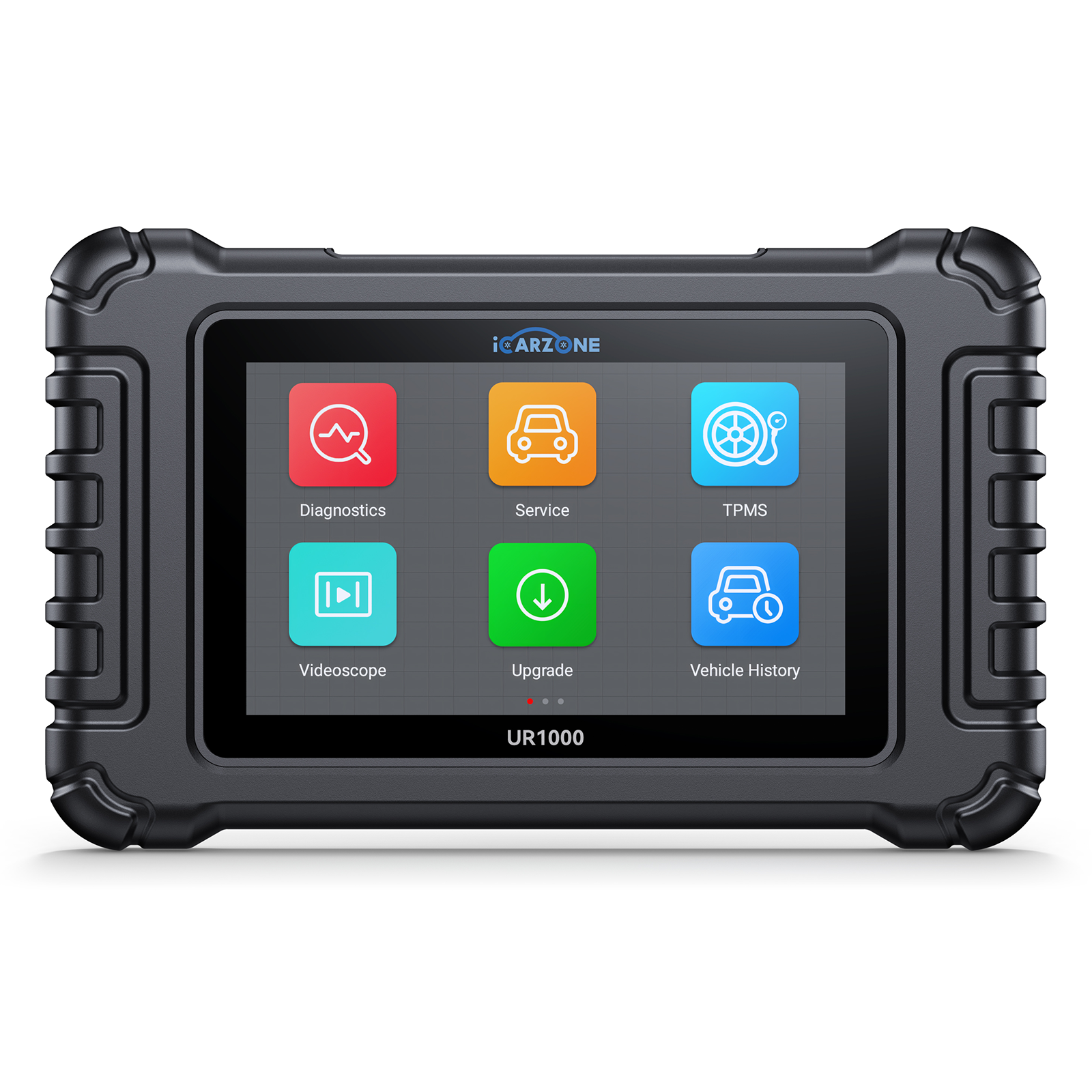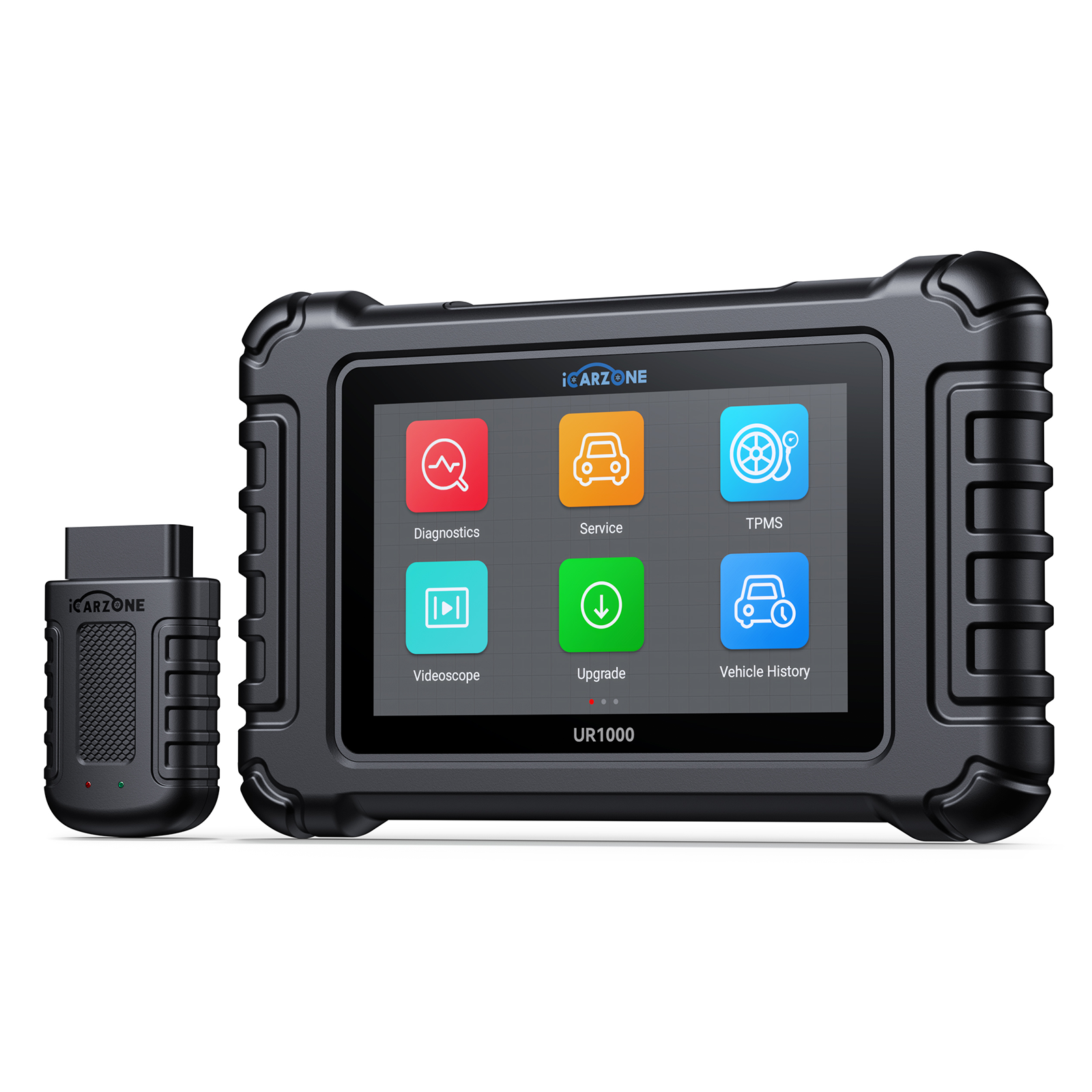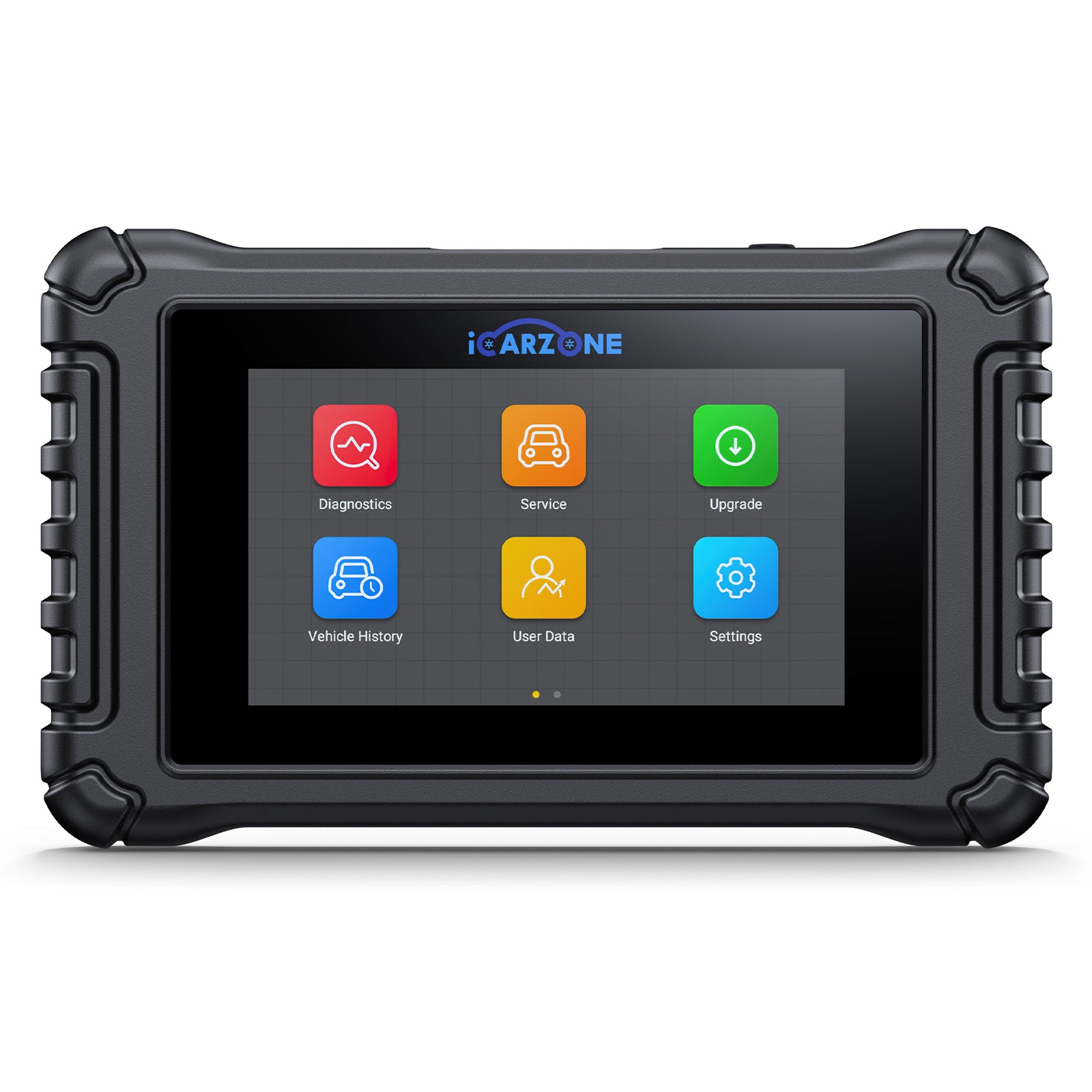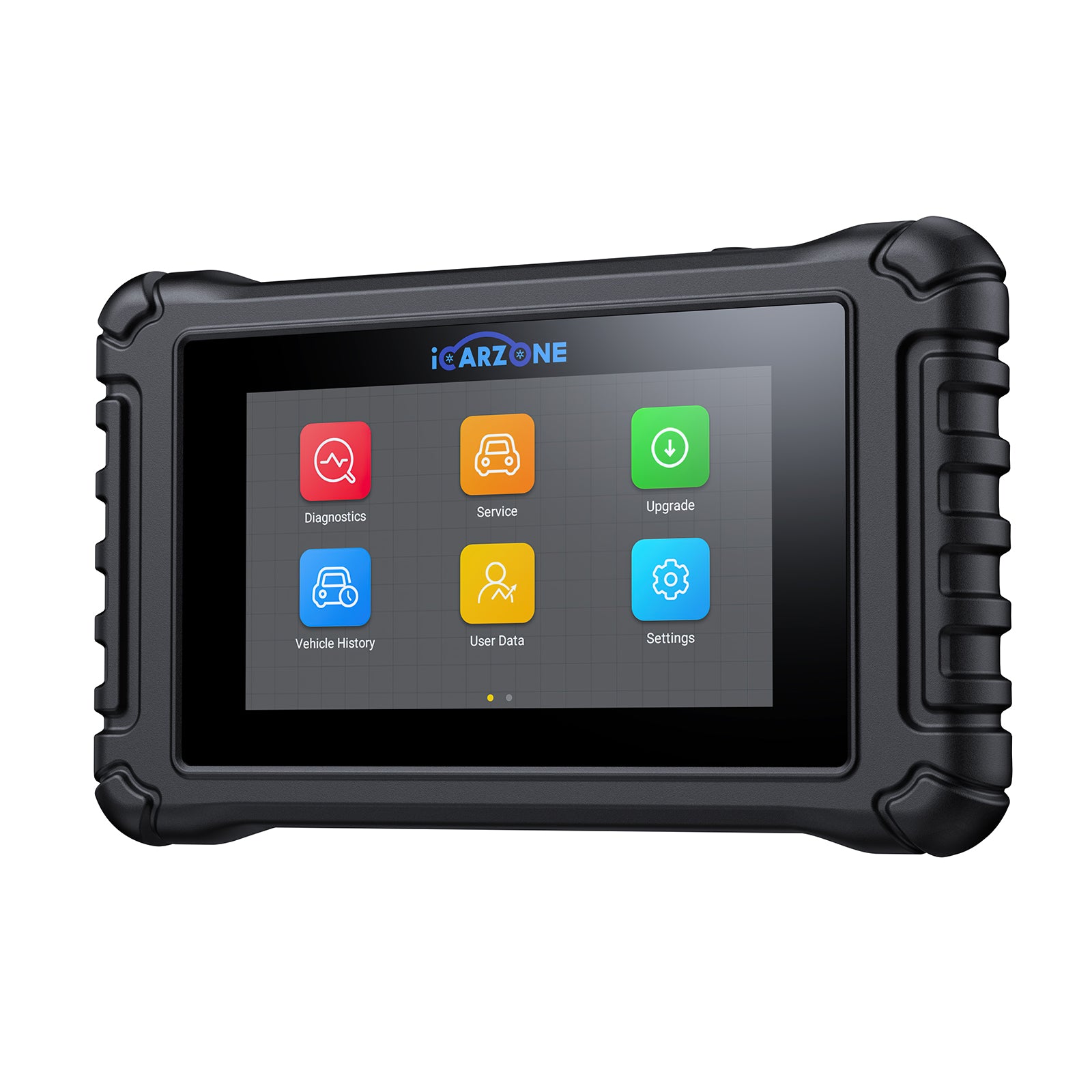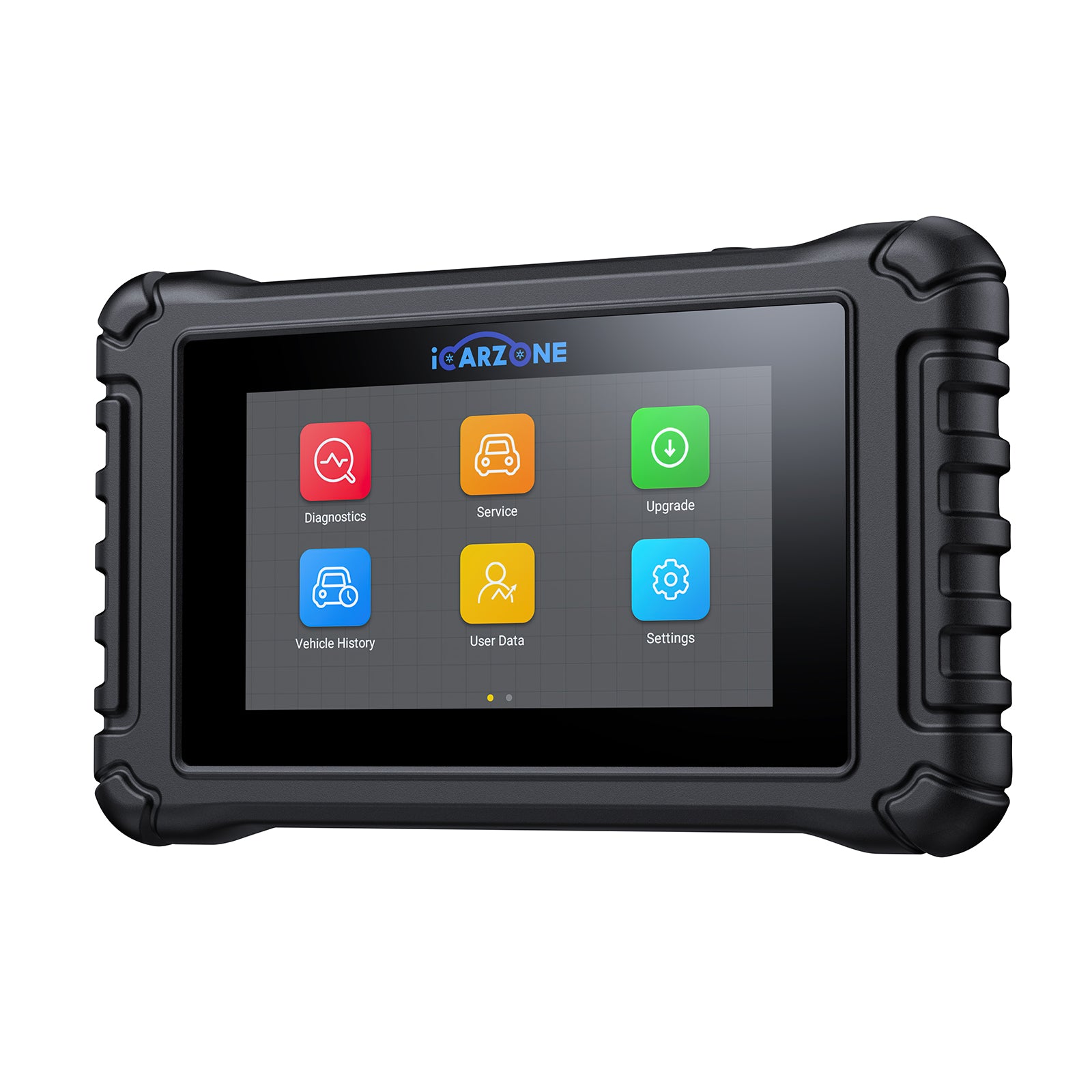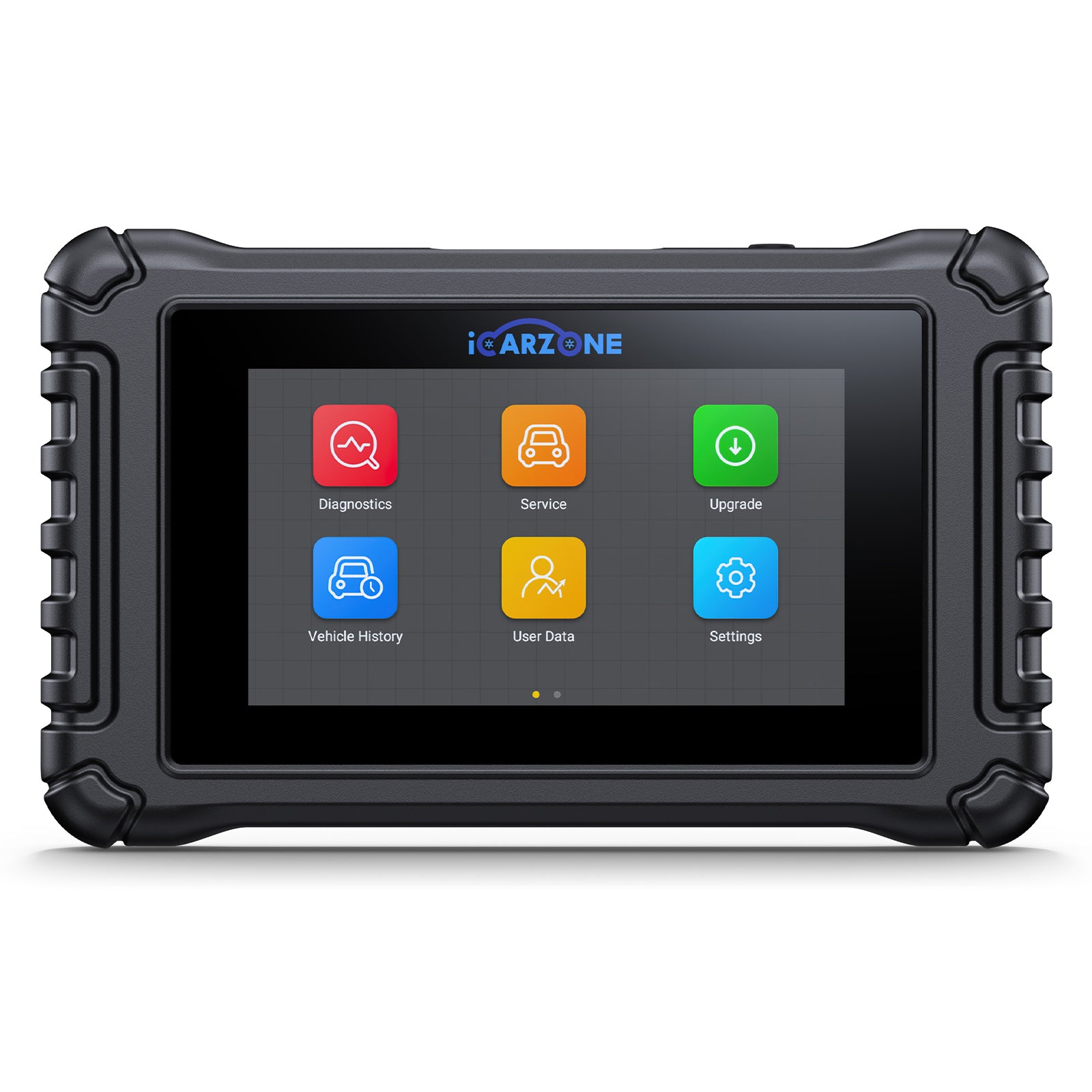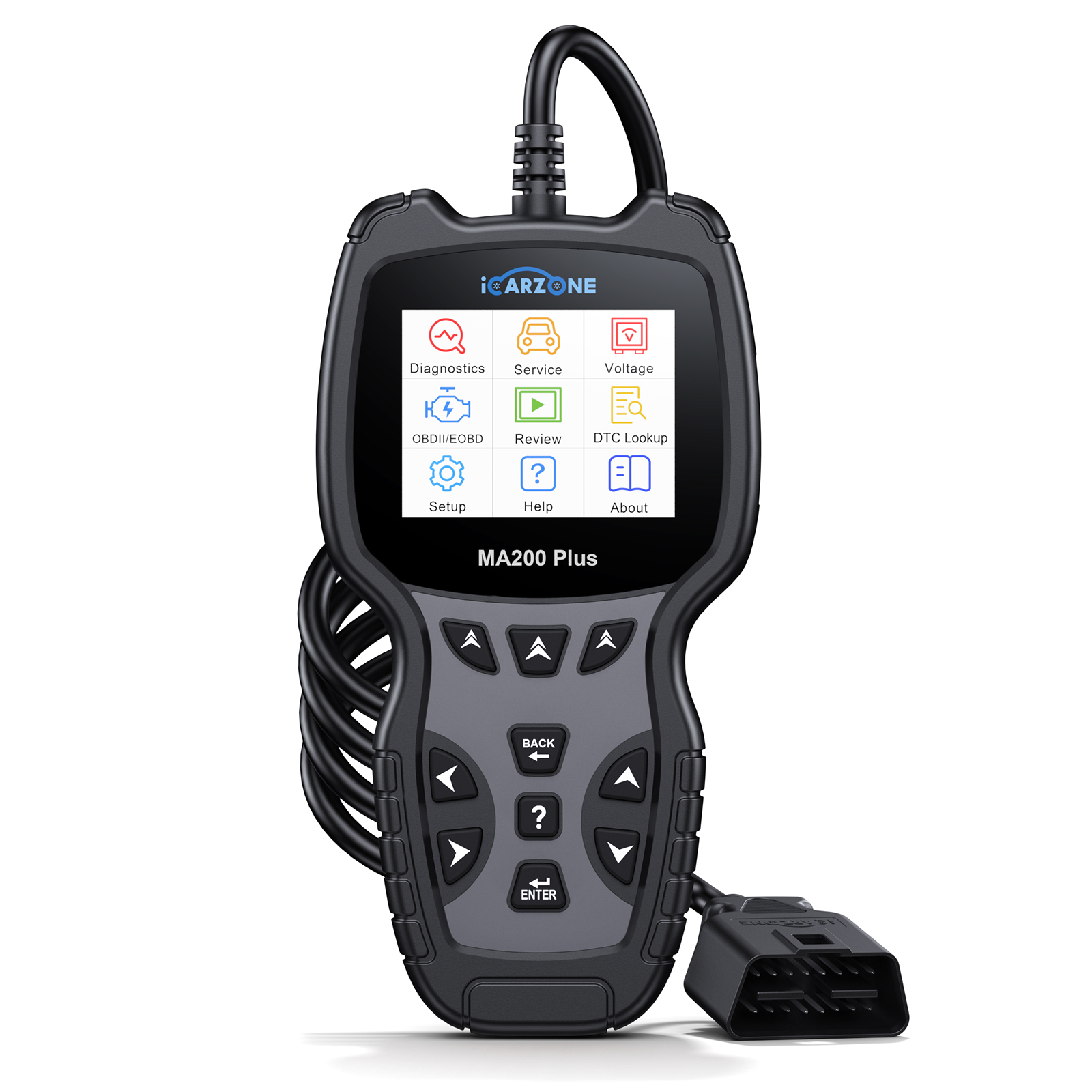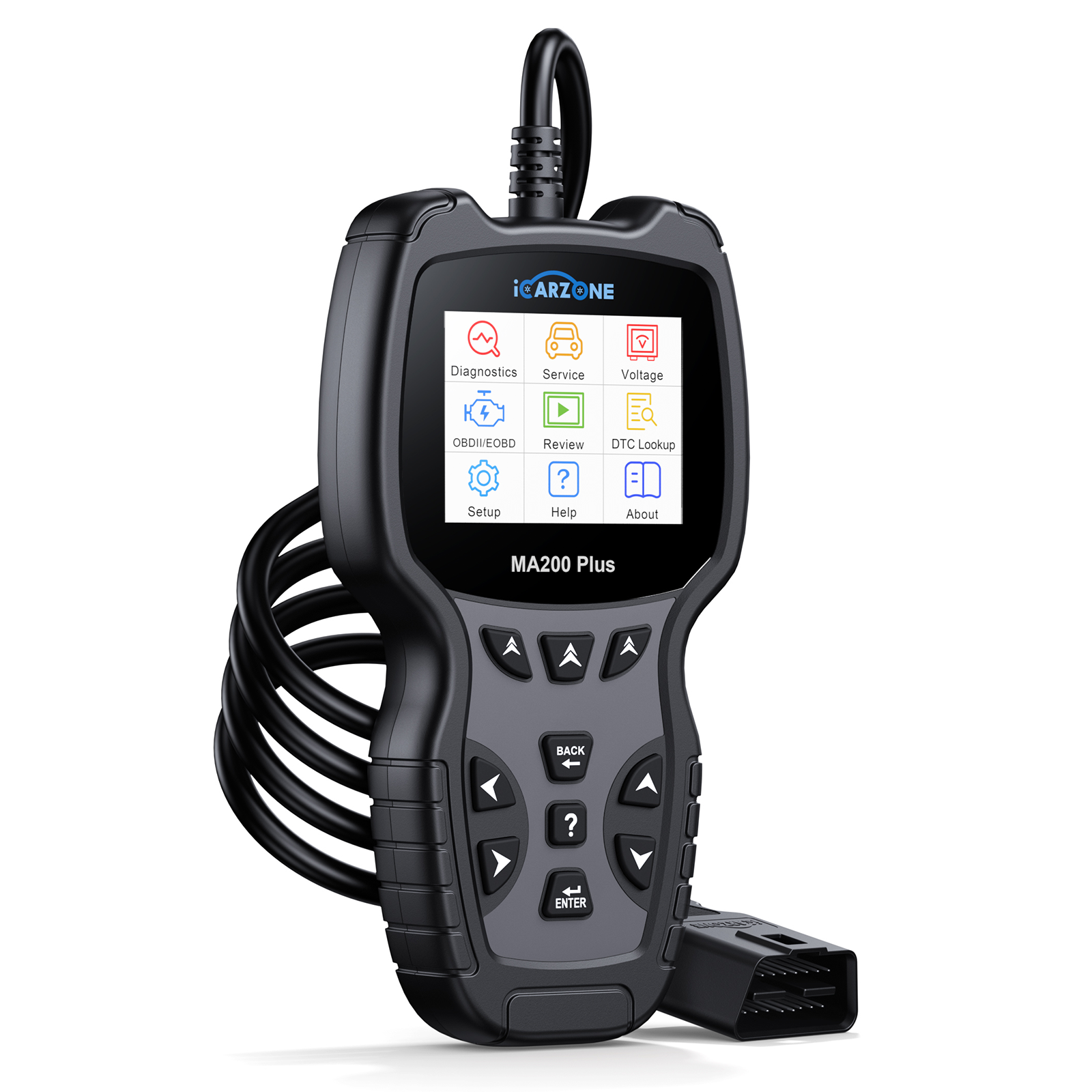P0403 in Honda Civic &Jeep Grand Cherokee: Fix EGR Valve Circuit with ICARZONE UR1000 [2025]
![P0403 in Honda Civic &Jeep Grand Cherokee: Fix EGR Valve Circuit with ICARZONE UR1000 [2025]](http://icarzone.com/cdn/shop/articles/52.png?crop=center&height=1370&v=1756806195&width=2000)
P0403: EGR Valve Control Circuit Malfunction
Solve P0403 in Honda Civic & Jeep Grand Cherokee. Learn causes, symptoms, and fixes for this EGR system error using the ICARZONE UR1000 diagnostic tool.
Get ICARZONE UR1000 Now1. What is P0403?
P0403 is a universal Diagnostic Trouble Code indicating an Exhaust Gas Recirculation (EGR) Valve Control Circuit Malfunction. The EGR valve reduces nitrogen oxide (NOx) emissions by recirculating a portion of exhaust gas back into the intake manifold, lowering combustion temperatures. The "control circuit" refers to the electrical wiring, solenoid, and ECM signals that regulate the valve’s opening/closing.
The code triggers when the ECM detects one of three critical issues:
- Open circuit: No voltage reaches the EGR valve solenoid (common in corroded connectors).
- Short circuit: Unintended electrical path (e.g., damaged wiring touching the engine block).
- Implausible signal: The EGR valve doesn’t respond to ECM commands (e.g., stuck valve despite 12V signal).

Why It Matters for Honda Civic & Jeep Grand Cherokee
Honda Civic (2016–2024) and Jeep Grand Cherokee (2018–2024) use distinct EGR designs—both critical to meeting EPA emissions standards:
- Honda Civic 1.5L Turbo: Uses a bypass-type EGR valve integrated with the intake manifold. P0403 here causes 15–20% higher NOx emissions, failing smog tests in states like California. It also triggers "Limp Mode" in 2020+ models, limiting speed to 65 mph.
- Jeep Grand Cherokee 3.6L Pentastar V6: Features a cooled EGR system (with a heat exchanger) to reduce exhaust gas temperature. P0403 in Jeeps leads to rough idling, reduced towing capacity (dropping from 6,200 lbs to 3,500 lbs), and potential damage to the catalytic converter (a $1,200+ repair).

2. Common Causes in Honda Civic & Jeep Grand Cherokee
P0403 affects both models but stems from manufacturer-specific design vulnerabilities. Below are verified causes with real-world case studies:
- Carbon-Clogged EGR Valve (Honda Civic 1.5L Turbo 2021) — Example: 2021 Civic owner reported P0403 and "Check Emissions" warnings. ICARZONE UR1000’s EGR Valve Response Test showed the valve received 12V but didn’t open. Disassembling the valve revealed carbon buildup (from short-trip driving) blocking the solenoid plunger. Cleaning with Honda-approved EGR cleaner (part #08798-9012) and running UR1000’s EGR Relearn fixed the code.
- Corroded EGR Connector (Honda Civic 2.0L 2019) — Example: 2019 Civic with 85,000 miles displayed intermittent P0403. UR1000’s Connector Resistance Test showed 18Ω (normal: <1Ω) in the EGR valve’s 2-pin connector. Corrosion from road salt (common in northern states) had broken the electrical path. Cleaning with electrical contact cleaner and applying dielectric grease resolved the open circuit.
- Damaged EGR Wiring (Jeep Grand Cherokee 3.6L 2022) — Example: 2022 Grand Cherokee owner developed P0403 after off-roading. UR1000’s Circuit Trace Test identified a short circuit in the EGR wiring harness—rubbing against the front suspension control arm had stripped the insulation. Repairing with Jeep-spec wiring (part #68274607AA) and securing it with heat-shrink loom fixed the issue.
- Failed EGR Solenoid (Jeep Grand Cherokee 5.7L HEMI 2020) — Example: 2020 Grand Cherokee with 60,000 miles showed P0403 and rough idling. UR1000’s Solenoid Voltage Test confirmed 12V to the EGR solenoid, but no movement. Replacing the solenoid (Jeep part #68304924AA) and performing a Jeep EGR Calibration via UR1000 restored normal operation.
- ECM Software Glitch (Both Models) — Example: 2023 Honda Civic and 2023 Jeep Grand Cherokee both had P0403 with no hardware issues. UR1000’s TSB Lookup found Honda TSB 23-086 (EGR signal calibration) and Jeep TSB 22-006-23 (ECM firmware update). Installing the latest software via UR1000 cleared P0403 in both vehicles.

3. Key Symptoms in Honda Civic & Jeep Grand Cherokee
Symptoms of P0403 vary by model but share core emissions and performance issues. Here’s how they manifest in each vehicle:
Honda Civic (2016–2024)
- Check Engine Light + "Check Emissions System" message (2020+ models display this in the digital cluster).
- Reduced acceleration—1.5L Turbo models take 2+ seconds longer to reach 60 mph.
- Intermittent stalling at stop signs (common in 2016–2019 Civics with carbon-clogged valves).
- Increased fuel consumption (8–10% MPG drop reported in city driving).
- Failed smog tests—NOx levels exceed 0.05 g/mile (EPA limit for 2024 Civics).
Jeep Grand Cherokee (2018–2024)
- Check Engine Light + "EGR System Fault" warning (3.6L models) or "Reduced Power" (5.7L HEMI).
- Rough idling—engine vibrates at 700–800 RPM (normal: 650 RPM).
- Turbo lag (2.0L Turbo models) or delayed throttle response (3.6L V6).
- Decreased towing capacity—can’t haul more than 3,500 lbs (vs. 6,200 lbs max).
- Excessive exhaust smoke (white or gray) during cold starts (from unburned fuel).

4. Models Prone to P0403 (Honda/Jeep)
Manufacturer service data and owner forums highlight these variants with the highest P0403 incidence, tied to EGR system design and usage patterns:
| Brand | Model/Engine | Model Years | % of P0403 Cases | Primary Cause |
|---|---|---|---|---|
| Honda | Civic 1.5L Turbo | 2016–2024 | 62% | Carbon buildup in EGR valve |
| Honda | Civic 2.0L Naturally Aspirated | 2016–2021 | 18% | Corroded EGR connector |
| Honda | Civic Hatchback 1.5L Turbo | 2017–2024 | 20% | EGR solenoid failure |
| Jeep | Grand Cherokee 3.6L Pentastar V6 | 2018–2024 | 58% | Damaged EGR wiring (off-roading) |
| Jeep | Grand Cherokee 5.7L HEMI V8 | 2018–2022 | 27% | EGR cooler leak (shorting circuit) |
| Jeep | Grand Cherokee 2.0L Turbo | 2021–2024 | 15% | ECM software glitch |
Critical TSBs to address P0403:
- Honda TSB 23-086 (2016–2023 Civic 1.5L Turbo): EGR valve cleaning procedure + ECM update.
- Jeep TSB 22-006-23 (2018–2024 Grand Cherokee 3.6L): Wiring harness protection kit + EGR calibration.
- Jeep TSB 21-012-22 (2021–2022 Grand Cherokee 5.7L): EGR cooler replacement for leak-related shorts.
5. Diagnostic Steps (Honda/Jeep Focus) with ICARZONE UR1000
Diagnosing P0403 requires testing the EGR control circuit’s voltage, wiring, and valve response—here’s how to use ICARZONE UR1000 for model-specific accuracy:
| Step | Action with UR1000 | Model-Specific Goal | Pass/Fail Criteria |
|---|---|---|---|
| 1 | Full System Scan > Select "Honda" or "Jeep" > Model > Engine | Confirm P0403 and check for related codes (P0401, P0404, P0405) | Pass: Isolated P0403 | Fail: Multiple EGR codes (system-wide issue) |
| 2 | Live Data > "EGR System" > "EGR Solenoid Voltage" |
|
Pass: Voltage matches specs | Fail: 0V (open circuit) or >14V (short) |
| 3 | Advanced Diagnostics > "EGR Valve Response Test" |
|
Pass: Normal movement | Fail: No response (stuck valve) or erratic movement |
| 4 | Component Test > "EGR Wiring Continuity" | Check resistance between ECM and EGR valve connector (Honda: <1Ω; Jeep: <0.5Ω) | Pass: Resistance within range | Fail: >1Ω (open) or <0.1Ω (short) |
| 5 | Service Functions > "TSB Lookup" > Enter VIN | Check for model-specific TSBs (Honda 23-086, Jeep 22-006-23) | Pass: No applicable TSBs | Fail: TSB exists (follow recommended fix) |
Case Example: A 2022 Jeep Grand Cherokee 3.6L failed Step 4 (5Ω resistance). UR1000’s Jeep Wiring Trace Tool pinpointed a damaged section near the front suspension—off-roading had stripped the wire’s insulation. Repairing with Jeep’s TSB-recommended harness kit (#68274607AA) restored continuity to 0.3Ω. After a 20-mile test drive with UR1000 monitoring EGR voltage, P0403 cleared.

6. Fixes & Execution for Honda Civic & Jeep Grand Cherokee
Resolving P0403 requires model-specific repairs to Honda’s and Jeep’s EGR systems, with ICARZONE UR1000 enabling critical calibration steps:
Honda Civic Fixes
-
Clean Carbon-Clogged EGR Valve (1.5L Turbo):
- Disconnect the battery and remove the EGR valve (Honda part #18011-5AA-A01 for 2016–2020 Civics).
- Clean the valve’s plunger and housing with Honda EGR cleaner (#08798-9012)—avoid wire brushes (they scratch the sealing surface).
- Reinstall the valve and use UR1000’s Honda EGR Relearn to reset adaptive values (critical for 2020+ models).

-
Repair Corroded Connectors:
- Disconnect the EGR valve’s 2-pin connector and spray with electrical contact cleaner (#CRC 05113).
- Use a small wire brush to remove corrosion from pins—apply dielectric grease to prevent future rust.
- Verify continuity with UR1000’s Connector Test (target <1Ω resistance).
-
ECM Software Update (2020–2024 Civics):
Use UR1000’s Honda ECU Programming to install TSB 23-086’s firmware (v1.28 for 1.5L Turbo). Ensure a battery tender is connected to avoid voltage drops during the 15-minute update.
Jeep Grand Cherokee Fixes
-
Repair Damaged EGR Wiring (3.6L V6):
- Remove the EGR wiring harness (Jeep part #68274607AA for 2018–2024 models) and inspect for chafing.
- Replace damaged sections with heat-shrink loom and secure the harness to the frame (away from suspension components) using Jeep’s TSB-recommended clips (#6505292AA).
- Run UR1000’s Jeep EGR Circuit Validation to confirm no shorts/open circuits.
-
Replace Failed EGR Solenoid (5.7L HEMI):
- Remove the old solenoid (Jeep part #68304924AA) and install a new OEM unit (aftermarket solenoids often fail within 6 months).
- Perform UR1000’s EGR Solenoid Calibration to sync the new part with the ECM.
-
Fix EGR Cooler Leaks (2021–2022 5.7L):
Replace the leaking EGR cooler (Jeep part #68436634AA) per TSB 21-012-22. After installation, use UR1000’s Leak Detection Test to confirm no exhaust gas is seeping into the wiring circuit.
7. Repair Costs & Safety Tips for Honda/Jeep
Critical Safety Precautions
- Allow the engine to cool for 1+ hour before working on the EGR system—exhaust components reach 1,200°F+ during operation, causing severe burns.
- Disconnect the battery’s negative terminal when repairing wiring or replacing the EGR valve—prevents short circuits in the ECM.
- For Honda Civics: Use only OEM EGR valves—aftermarket units often have incorrect flow rates, triggering P0403 again within 3 months.
- For Jeep Grand Cherokees: When replacing the EGR cooler, torque the mounting bolts to 18 ft-lbs (Jeep spec) to avoid leaks.
- Wear gloves and eye protection when cleaning the EGR valve—carbon deposits and cleaner can irritate skin/eyes.
- After repairs, clear codes with UR1000 and drive 50+ miles (including highway and city driving) to ensure P0403 doesn’t return.
8. Preventive Maintenance for P0403
Honda Civic and Jeep Grand Cherokee owners can avoid P0403 with these manufacturer-recommended steps:
Honda Civic Maintenance
- Clean the EGR valve every 30,000 miles (1.5L Turbo) using Honda-approved cleaner—critical for owners who do mostly short trips (under 5 miles).
- Inspect the EGR connector every 15,000 miles—apply dielectric grease annually to prevent corrosion (especially in salt-belt states).
- Use top-tier gasoline (91+ octane for 1.5L Turbo)—low-quality fuel increases carbon buildup in the EGR system.
- Run UR1000’s EGR System Health Check quarterly to monitor valve response and voltage.
Jeep Grand Cherokee Maintenance
- Inspect EGR wiring after every off-roading trip—secure loose harnesses with Jeep’s TSB-recommended clips.
- Replace the EGR solenoid every 80,000 miles (3.6L V6) as preventive maintenance—avoids sudden failures.
- Flush the EGR cooler every 60,000 miles (5.7L HEMI) using Jeep-approved coolant (#68218925AB) to prevent leaks.
- Update ECM firmware annually via UR1000 to address TSB-related glitches (e.g., 2024’s v1.12 update for 3.6L models).
9. Frequently Asked Questions
Short-term driving (100–200 miles) is possible, but long-term operation causes: Honda—failed smog tests; Jeep—catalytic converter damage. Fix within 2 weeks to avoid costly repairs.
Yes—if the code is due to carbon buildup (62% of Civic cases). Use UR1000’s EGR Valve Response Test first to confirm the valve is stuck (not a wiring issue) before cleaning.
Yes—supports 2006–2024 Honda Civics and 2011–2024 Jeep Grand Cherokees. Older models (e.g., 2011–2017 Grand Cherokee) use legacy EGR protocols, which UR1000 fully supports.
Commonly due to unaddressed wiring issues or skipped calibration. Use UR1000’s Wiring Continuity Test to check for shorts, and perform the model-specific relearn (Honda EGR Relearn/Jeep Calibration).
Indirectly—restricted airflow increases engine temperature, accelerating EGR carbon buildup (Honda) or wiring insulation damage (Jeep). Replace air filters every 15,000 miles (Honda #17220-5AA-A00; Jeep #68229407AA).
No—unless the issue is caused by aftermarket modifications (e.g., non-OEM EGR valves). Repairs using OEM parts and UR1000’s TSB-compliant tools preserve warranty coverage.
10. Summary
P0403 (EGR valve control circuit malfunction) is a common emissions-related code in 2016–2024 Honda Civics and 2018–2024 Jeep Grand Cherokees, caused by carbon buildup (Honda), wiring damage (Jeep), or solenoid failure. Left unaddressed, it leads to failed smog tests, reduced performance, and costly catalytic converter damage.
The ICARZONE UR1000 simplifies diagnosis with model-specific tools: Honda EGR Relearn, Jeep wiring trace, and TSB lookup. Most cases are fixed with cleaning (Honda) or wiring repairs (Jeep)—avoiding expensive dealer visits. By following preventive maintenance steps and using UR1000 to monitor EGR health, owners can keep their vehicles emissions-compliant and reliable.
Fix P0403 in Honda Civic/Jeep Grand Cherokee with ICARZONE UR1000
UR1000 handles Honda’s bypass-type EGR and Jeep’s cooled EGR systems, offering valve testing, wiring checks, and TSB-compliant fixes. Save time and money—diagnose and fix your vehicle at home.
Order ICARZONE UR1000 Today© 2025 iCarzone. All rights reserved.


